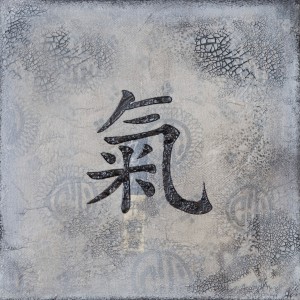Here is an excellent article.
Relaxing your body and calming your mind always helps decrease and help you cope with your pain, whether you’re flared-up or in need of ongoing pain management techniques. These range from those that can be done even when the pain is fierce to tools that you can utilise throughout your day and night, offering on-the-spot calm, release from anxiety, and a reduction in pain. It’s crucial to have techniques that you will still be able to enact even if the pain is so high you can scarcely think, let alone attempt anything complicated.
The many different forms of meditation to body-scan relaxation, autogenic training, progressive muscle relaxation, diaphragmatic breathing (and other breathing techniques), self-hypnosis or guided hypnosis, visualisation and creative imagery. There are many different techniques you can learn; experiment with the above list and find something that works for you.
Breathing to Calm the Body and Mind
Deep breathing is the cornerstone of relaxation practices and becomes all the more vital when living with pain. It can be combined with other relaxing practices including everything from meditation to aromatherapy to listening to your favourite music.
The key in reducing pain through deep breathing is to breathe deeply from the abdomen, maximising the amount of oxygen in your lungs. Taking deep breaths from the abdomen rather than shallow breaths from your upper chest, means you absorb more oxygen. This results in your body being less tense, short of breath, more relaxed and calm, and less anxious.
- If possible, sit with your back straight, or if that is too painful for you, lying down and putting one hand on your chest and the other on your stomach is fine.
- Breathe in through your nose. The hand on your stomach should rise. The hand on your chest should move very little.
- Exhale through your mouth, pushing out as much air as you can while contracting your abdominal muscles. The hand on your stomach should move in as you exhale, but your other hand should move very little.
- Continue to breathe in through your nose and out through your mouth. Try to inhale enough so that your lower abdomen rises and falls. Count slowly as you exhale.
Visualisation Meditation for Relaxation and Pain Relief
Visualisation, or guided imagery, is a variation on traditional meditation that requires you to employ not only your visual sense, but also your sense of taste, touch, smell, and sound. When used as a relaxation technique, visualisation involves imagining a scene in which you feel at peace, free to let go of all tension and anxiety, thus reducing your pain, or at least your reaction to it. It’s also a wonderful escape from the tough reality of living with severe chronic pain. Choose whatever setting is most calming to you, whether it’s a tropical beach, a favourite childhood spot, or a quiet wooded glen. You can do this visualisation exercise on your own in silence, while listening to soothing music, with a therapist or an audio recording guiding you through the imagery. To help you employ your sense of hearing you can use a sound machine or download sounds that match your chosen setting; the sound of ocean waves if you’ve chosen a beach, for example. However, to begin with, guided meditations are perhaps the easiest to learn from, alternatively, try the simple guidelines below:
- Find a quiet, relaxed place. Beginners sometimes fall asleep during a visualisation meditation, so you might try sitting up or
standing. - Close your eyes and let your worries drift away. Imagine your restful place. Picture it as vividly as you can—everything you can see, hear, smell, and feel. Visualisation works best if you incorporate as many sensory details as possible, using at least three of your senses. When visualising, choose imagery that appeals to you; don’t select images because someone else suggests them, or because you think they should be appealing. Let your own images come up and work for you.
- If you are thinking about a beach on a tropical island, for instance:
- Walk slowly around the beach and notice the colours and textures around you.
- Spend some time exploring each of your senses.
- Feel the warm sand between your toes, the sun on your back, the waves tickling your ankles etc.
- See the sun setting over the water and all the colours of the skies.
- Hear the birds singing, palms swaying, sea lapping…
- Smell the flora and fauna.
- Taste the fresh, clean air.
- Enjoy the feeling of deep relaxation that envelopes you as you slowly explore your restful place. When you are ready, gently open your eyes and come back to the present. Don’t worry if you sometimes zone out or lose track of where you are during a guided imagery session, just simply bring yourself back to the moment.
Become Focused by Visualising Feelings and Colours
Another technique when experiencing excruciating pain is to focus on something that soothes your soul. It could be the feeling of a soft and fuzzy blanket or a place that quiets your spirit, even just play with colours – visualise the colours of a rainbow flowing through you, from red to orange to yellow to green to turquoise to indigo to violet to white to silver to gold. Anything that will keep your mind focused instead of constantly being drawn back to the pain. Think about the feeling, the smell, the taste (if applicable) and the sounds of this colour, object or place. Focus on what it looks like. Use all your senses to “innerly describe” your focus point, while distracting yourself from the pain. Recognise the pain, but don’t give into it. Feel it like you were not in you own body. Put your mind and body in separate places.
It may sound like hocus-pocus, but this technique – a combination of that of the kung fu traditions and that of the more modern JudoKai – can really help you when the pain is so severe, you can do little else. All of this is may be familiar if you do, or once enjoyed, martial arts. To begin, meditate. Visualise your body as a translucent 3D figure. You can visualise your energy. Try using thousands of white dots to represent your energy or Chi (Ki). Now visualise a strength. It isn’t contained in your translucent figure but it flows through you. Now take your energy and focus it on the spot of your pain and force the strength to the same spot. Visualise as well as actually forcing the ki and strength to that spot. Imagine even another force that forms a protective bubble around that spot. Nothing can go through it.
Chi Kung Breathing
Similar to the above technique in origin, this technique involves Chi Kung breathing where you breath into your body at the source of the pain, up to you Tan Tien, which is the centre of your energy and about three finger-widths below your navel, then exhale the pain back out. So for example, if your have CRPS in your right foot, you breath into a point on the sole of your foot, up to your Tan Tien and exhale pushing out the pain with your breath and getting the Chi or energy moving in the stagnant area where the CRPS is. You can add colour, deep blue is always soothing to pain patients in colour therapy but go with whatever feels right for you.
Try to Relax with a Warm Salt Bath
If you are able to prepare or blessed with someone to help you prepare a warm bath with Himalayan, Epsom or Dead Sea Salts (for their minerals to help soothe your muscles), during a severe flare-up or episode of increased pain, it may be the best thing for you. The water is healing on so many levels.
Ensure that the lighting is low and room as peaceful as possible – it’s about taking time out to cope and heal from this excruciating aspect of chronic pain conditions such as CRPS or a flare of fibromyalgia, though this advice extends to all of you who suffer with severe pain.
If you do not have a bath available, using heat mats can help soothe your pains, depending on what your body responds best to; some people prefer ice but never use ice if you have CRPS/RSD as this damages already weak ligaments and worsens the CRPS.
Use Psychology to Help You Cope
When your pain is increased the most important coping tool is in how you think about the pain. If you start thinking either this flare episode or our condition in general will always be terrible, horrible, debilitating, etc. then you are setting yourself up for an even harder time. Be kind to yourself, speak gently. Learning to handle yourself psychologically is no easy feat with pain but it is possible and you can improve your relationship to your pain condition and symptoms.
When pain is worse than ‘normal’ pain, it is so easy to have negative and unhelpful thoughts, or dwell on unpleasant things but never berate yourself for feeling how you do. You are in pain, you can be forgiven for not being spritely or joyful right now.
Some examples of negative and unhelpful thinking are:
“I cannot stand this pain any longer”
“Why can’t doctors do something for me?”
“Whatever I do I have pain so what’s the point?”
“It’s terrible and I’m never going to get any better”
“Life isn’t worth living like this”
Thoughts can focus on a number of areas: how pain has affected your life, concerns about the future and getting worse, ‘if only’ thoughts, going over the circumstances which brought about the pain problem (for example accidents or injuries), your medical care, a sense of unfairness of having pain and of your life being changed in ways that you do not want.
It is common and natural to have such thoughts when pain is at its worst and most debilitating. Such thoughts can, however, be negative, destructive and self-defeating on your pain experience. Although these types of thoughts are common, they do not have a good effect on you nor do they help you cope with pain. However, if negativity becomes your new normal, it’s time to bring out the big guns.
One beneficial technique is using cognitive behavioural therapy or CBT, see the post on pain psychology for a table of thoughts and more information. It is important that you develop the skill of maintaining a positive attitude and keep your morale high.
Remind yourself repeatedly that you are strong enough to pull through this and that such episodes are mostly short-lived. Most of the patients who suffer from such acute flare-ups of chronic pain also find relief in prayers, mantras and meditation.
Try Heat, Ice and Repositioning
Use heat pads or cold compresses over painful areas to help relieve pain by reducing inflammation and relaxing muscle tension but NEVER USE ICE WITH CRPS, it weakens ligaments and worsens the condition. Keep altering your position and gently stretch and rotate your limbs and joints to prevent becoming too stiff and more painful.
 Distract Yourself [and Have a Giggle]
Distract Yourself [and Have a Giggle]
Although mindfulness has its place, sometimes all you want to do is escape the pain. It’s possible to increase your pain tolerance by finding a way to take your mind off it. Distraction can take any form, though obviously brain fog is high during flare-ups so reading is not always possible. However, watching an amusing film or some comedy stand-up has the benefit of distracting you and making you laugh, which can only help reduce your pain.
Laughter stimulates the brain’s production of endorphins, which decrease the body’s perception of pain. Laughter is relaxing, too. It’s impossible to be tense and laugh. Also, laughter has a carry-over effect. Pain relief continues even after you stop laughing. Focusing your attention on something other than your pain doesn’t take the pain away, but it can make it more bearable.
Look Positively at the Pain [and Get Support]
When your pain increases or you have a pain flare-up, it may be an indication that you exceeded your limitations and pushed yourself too hard so see if there are any positive lessons that can be learned to reduce it happening again. You may feel that the pain is defeating you and there is nothing that you can do to stop it. This will only defeat you if you allow it to isolate you from other people, destroy your relationships with family and friends and make you bitter and angry.
During this period of pain look at what positive lessons you can learn, both about avoid it reoccurring again and about how you need to build up and nurture your friendships, relationships and the things that are important to you, so that you can try to enjoy life in spite of the pain. Having a good support network – online or in person – is vital. Reach out, post something on our Facebook page or Guest Book or Google support groups in your area.
Try Breathing into the Body with the Body-Scan
The body-scan practice, as taught in Jon Kabat-Zinn’s mindfulness-based stress reduction program for people with chronic pain, seems to have a cumulative effect on reducing pain levels and also helps heal the disassociation patients with chronic pain so often have with their painful bodies. This is a slightly adapted version, where you ‘breathe into the body’ reducing the pain by increasing the flow of chi or prana (energy). Follow these simple instructions daily if possible:
- Start in any comfortable relaxation pose such as the yoga asana, shavasana (corpse pose), lying down flat with arms out to the sides, breathing slowly and deeply.
- Place your hands on your belly and feel the movement of the breath.
- Notice the belly rising and falling, and notice the breath moving in and out of your body. In this practice, you will imagine that you can inhale and exhale through different parts of your body, as if your nostrils were moved to that part of the body.
- Start with your feet. Imagine the breath entering your body through the soles of your feet, and exiting your body through the soles of your feet. Notice any sensations there.
- Feel, or imagine, that flow of energy in the feet as you breathe.
- Now repeat this visualization for other parts of your body: Your lower legs, knees, and upper legs. Your hips, lower back, middle back, and upper back. Your belly and chest. Your shoulders, upper arms, elbows, lower arms, hands. Your neck. Your forehead and the crown of your head. When you get to an area that feels tense, uncomfortable, or painful, don’t skip it.
- There are several things you can try that may make you feel more comfortable.
- First, stay with the visualization and direct the breath right at the sensations of discomfort or pain.
- Imagine that the breath is dissolving or massaging the tension and pain. Imagine the solidity of the tension or pain softening. Find the space inside the pain.
- Second, try moving your attention back and forth between the uncomfortable area and a more comfortable area. For a few breaths, breathe into the painful area; for the next few breaths, breathe into another area. Switching back and forth like this can teach the mind how to give the uncomfortable sensations less priority.
- You are practicing a healthy kind of distraction: intentionally shifting your focus while still being present in your body.
- When you have worked your way through the whole body, let yourself feel the breath enter the body through your nose, mouth, and throat. Imagine the sensation of breathing through your whole body, as if the body were gently expanding as you inhale and contracting as you exhale. Feel, or imagine, the flow of energy through your whole body.
Read more about the body scan here: “Using the Body Scan to Help with Chronic Pain and Illness” By Toni...
Mindfulness to Reduce Chronic Pain
A curious thing happens when you practice it as seems to help you not only focus on the present moment but accept it, to notice your body and your surroundings in a way that is non-judgmental and non-reactive. Mindfulness appears to assist in the process of living with pain without responding to it in a way that may make you feel more distressed, more worried, and more hopeless.
Mindfulness meditation has been successfully used in pain clinics to reduce stress as well as chronic pain and is worth trying on account of the sheer amount of people it has helped. One reason mindfulness is thought to help people with chronic pain is that it keeps you in the present moment, instead of having anticipatory pain. You no longer agonise about the past – and what has been lost – because you’re living in the present.
Perhaps more importantly, mindfulness helps you cope with the emotions that spring up in association with having chronic pain, such as anger, resentment and sadness. This is important as while pain may be permanent for some of us, the additional suffering of reacting to our suffering is optional. Obviously we’re human, and have wobbles from time to time, and it’s natural to be sad that you’re not only missing out on life but in constant pain too but mindfulness is a key to a more fulfilling life.
Using simplicity itself, mindful breathing, and having a non-judgmental awareness softens your world, in turn allowing your spirit a little release of the drudgery and challenges. Taking a step back to simply be is powerful medicine indeed.
With practice, you may be better able to live beside your pain, noticing it, but living your life anyway. It also seems to help people to feel more relaxed; less tension helps to reduce pain. Another useful technique is the body scan, which is a mindfulness technique.
http://princessinthetower.org/pain-relief-and-coping-techniques-for...
